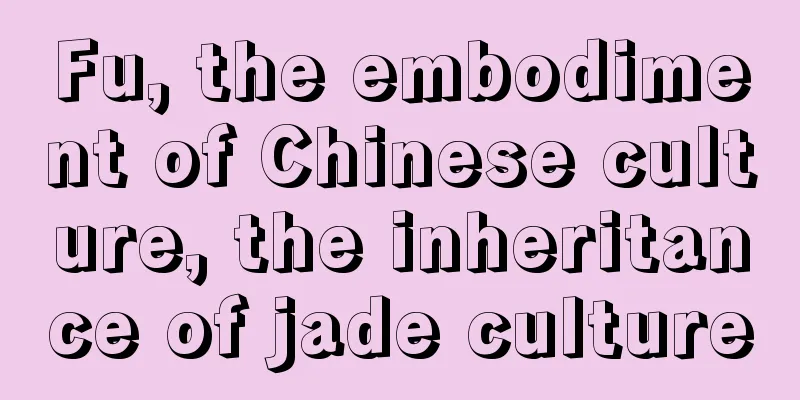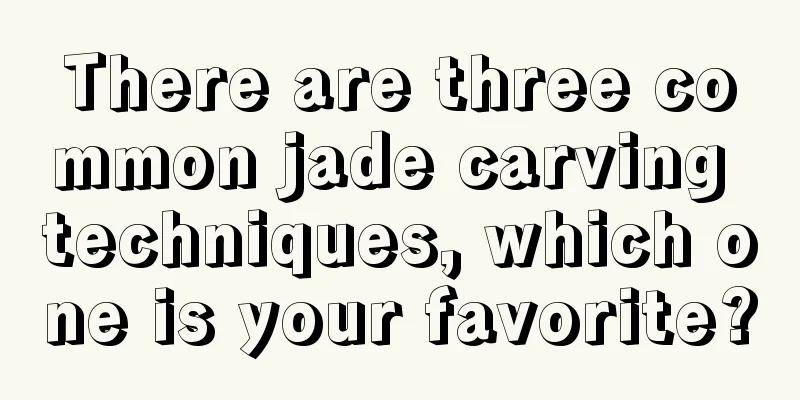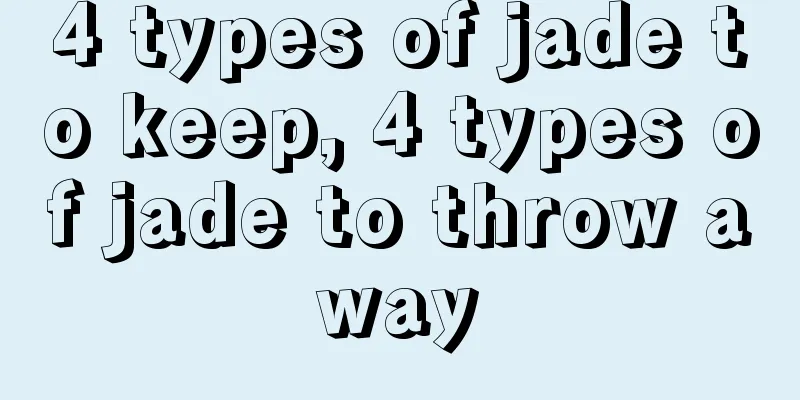Fu, the embodiment of Chinese culture, the inheritance of jade culture

|
Jade was introduced to China from Myanmar in the 16th century. It was also from that time that it was loved by the Chinese people. Since then, it has taken deep root in the long history of China and has developed to this day. Today, after a long historical evolution, the long-standing Chinese traditional culture and the king of jade - jadeite have gradually become closely integrated in the process of mutual penetration and sublimation, and Chinese traditional culture is fully reflected in jadeite. Every year during the Chinese New Year, everyone sticks a "Fu" character on their door, which shows that "Fu" has been an auspicious character in the minds of Chinese people since ancient times. Praying for blessings, hoping for blessings to come, and cherishing blessings are all common pursuits of everyone. For thousands of years, "Fu" has been interpreted into a deep-rooted culture. Blessing culture is the core of China's auspicious culture, which can be seen from the five aspects of blessing, wealth, longevity, happiness and wealth. "Blessing" is not only the first of the five major themes, but also the summary and representative of various auspicious cultures. It is the unique traditional cultural essence of the Chinese nation. In later Olympic Games, the appearance of the five Fuwa represented the importance of the word "Fu" in China. It embodies the Chinese people's ethical emotions, life consciousness and aesthetic taste. We can see the manifestation of people’s blessing mentality in many concrete things. The ancients believed that the dragon was the leader of all reptiles and had infinite abilities to transform; the phoenix was the king of all birds and the embodiment of good fortune. Wherever dragons and phoenixes appear, there will be peace and a good harvest. In jade carvings, there are many images that symbolize good fortune. For example, a dragon and a phoenix are called "dragon and phoenix bringing good fortune." Pixiu is a mythical beast in ancient Chinese mythology and legends. It is ferocious and powerful. It is responsible for patrolling the sky to prevent demons, ghosts, plagues and diseases from disturbing the heavenly palace. Legend has it that the Pixiu violated the rules of heaven, so the Jade Emperor punished him by making him eat only wealth from all directions, swallow everything without defecating, and be able to attract wealth and treasure, only taking in and not giving out, with extraordinary magical powers. After this story spread, the Pixiu was regarded as a lucky animal that brings wealth and treasure. Many Chinese people wear jade products with Pixiu in the shape of Pixiu because of this story. The ancients believed that bats, elks and longevity peaches were all auspicious objects. The three of them together were called "Fu Lu Shou" (homonym), which means good fortune, health and longevity. Jade carving themes like this are also very common in modern times and are also a tradition of expressing emotions through objects. Blessing culture is an important part of Chinese traditional culture. It is rich in content and profound in connotation. Jade is an important carrier for inheriting China's traditional blessing culture. While people enjoy the beauty of jade, they also carry blessings with them. As the saying goes, wearing gold shows wealth, wearing jade ensures safety. fcgc66 fcpf18 |
<<: Teach you how to distinguish B and C grade jadeite
>>: The Culture and Heritage of Jadeite
Recommend
A collection of top-quality jadeite with a value of over 10 billion yuan, truly the best treasure in the closet!
As the saying goes: A piece of jade is worse than...
What is the meaning of the jadeite Pixiu pendant? Who is it suitable for?
Pixiu is a mythical beast in ancient mythology an...
Rational analysis of jade market
1. Jade from the perspective of value There is a ...
The money in jade can't be saved
Today we will not talk about whether you should b...
The simplest way to identify jadeite, you will learn it in one go
The jade market today is filled with mixed goods....
How to choose jadeite? Species is more important than color
Many people like jade, but they don’t know much a...
Buddha appears when flowers bloom, and the ashes are piled up. These two treasures are unpopular themes. I guess many people have never seen them.
In order to quickly realize cash and recover fund...
How to identify the authenticity of jade
Regarding jadeite, identifying its authenticity h...
How many of the top ten carving techniques for jadeite do you know?
Jade carving is a unique skill in my country. It ...
I like jadeite. Where should I buy it and what is the most important thing to pay attention to?
Where should I go to buy jade? I believe most jad...
Can these top-grade jades still be called the “Four Heavenly Kings”?
The selection of the "Four Heavenly Kings&qu...
What is the meaning of jade cabbage? How did it become a rare treasure?
Jade has many uses. It is not only used to make p...
Cleaning and maintenance of jade peace buckle
The jade peace locket, also known as Huaigu, is a...
Don't pay the IQ tax, you need to pay attention to these points to identify the authenticity of jade
It is said that the jade industry is very complic...
How to choose jadeite? Remember these 5 points
We have talked about a lot of knowledge about how...









